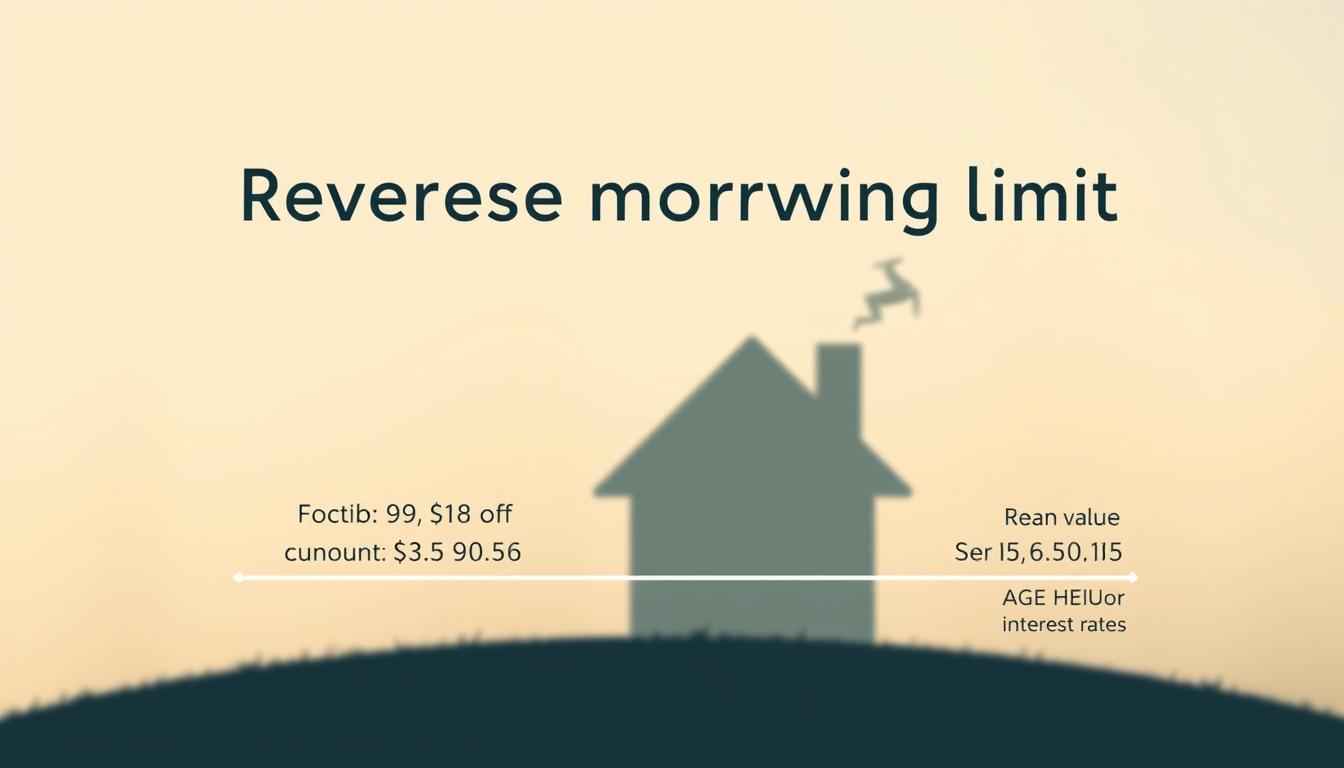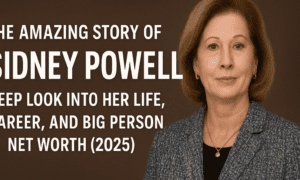Understanding how much can you borrow with a reverse mortgage can empower seniors to effectively manage their finances in retirement. These loans, specifically the Home Equity Conversion Mortgage (HECM), allow individuals aged 62 and older to convert a portion of their home equity into cash without a monthly mortgage payment. The amount you can borrow, termed the principal limit, is influenced by several key factors, including the borrower’s age, the value of their home, and prevailing interest rates. This article aims to clarify how much you can borrow with a reverse mortgage and what essential considerations come into play.
Understanding Reverse Mortgages
A reverse mortgage serves as a unique financial tool tailored for senior homeowners who wish to tap into their home equity. This arrangement allows seniors to convert a portion of their home value into cash, providing financial flexibility during retirement. To fully grasp its importance, understanding the reverse mortgage definition is vital—this type of loan allows homeowners to receive funds while retaining ownership of their property.
What is a Reverse Mortgage?
The essence of a reverse mortgage lies in its unique structure. Unlike conventional loans, where seniors make ongoing payments to lenders, these loans enable homeowners to receive money based on their home’s equity. The repayment occurs when the homeowner sells the house, moves away, or passes away. This financial solution particularly benefits seniors looking for a way to enhance their retirement income without sacrificing their home. Many consider it as a viable alternative to a traditional home equity loan for seniors, providing cash flow when needed most.
How Reverse Mortgages Work
Understanding how reverse mortgages function clarifies their fit within senior financial planning. Homeowners can choose to receive their funds in different ways—either as a lump sum, through monthly installments, or as a line of credit. This flexibility allows seniors to access cash for various needs while living in their homes. The principal amount based on the home’s appraised value, age of the borrower, and interest rates directly influences the loan amount. Typically, there are no monthly payments during the borrower’s lifetime, which differentiates reverse mortgages from traditional loans and makes them an attractive option for many retirees.
Factors That Determine Your Borrowing Limit
When considering a reverse mortgage, various reverse mortgage factors significantly influence how much one can borrow. Understanding these factors helps potential borrowers make informed decisions.
Age of the Borrower
The age of the borrower plays a crucial role in determining the borrowing limit. Generally, older individuals can access higher amounts, reflecting the impact of borrower age on potential limits. This approach minimizes the lender’s risk since older borrowers are statistically likely to have shorter life expectancies.
Interest Rates
Interest rates and borrowing limits closely correlate in reverse mortgage scenarios. Lower interest rates typically allow for higher borrowing limits, as the accrued interest over time remains manageable. This relationship can significantly benefit borrowers looking to maximize their loan amounts.
Home Value
Home value effects on reverse mortgage amounts are significant. The appraisal of the home directly influences the maximum loan available. Higher property values lead to increased borrowing potential, making it essential for homeowners to understand their property’s worth when considering a reverse mortgage.
Property Location
The location of the property can greatly affect the available borrowing limit. Market conditions in specific areas impact home values, which subsequently influences reverse mortgage options. Knowing the dynamics of the housing market in your area can provide valuable insights into potential borrowing limits.
How Much Can You Borrow with a Reverse Mortgage
Understanding how much you can borrow with a reverse mortgage involves several key factors. The process includes calculating reverse mortgage principal limit based on individual circumstances. Typically, potential borrowers will need to consider variables such as age, home value, and existing mortgage balance. These details can be entered into a reverse mortgage calculator to estimate available loan amounts that the borrower can access.
Calculating Your Principal Limit
When calculating the principal limit for a reverse mortgage, it is essential to provide accurate information. The estimated borrowing amount will depend on the appraised value of your home and federal guidelines. This precise calculation allows potential borrowers to gauge their financial flexibility and plan accordingly. By inputting factors like age and property value into a calculator, individuals can better understand their borrowing potential.
Fund Withdrawal Options
Borrowers have multiple options when it comes to accessing their funds through a reverse mortgage. There are several reverse mortgage fund options available, such as lump sum payments, fixed monthly payouts, or setting up a line of credit. Each of these choices carries varying costs and implications that should be carefully evaluated. Understanding these options can significantly impact financial decisions and overall financial strategy.
Types of Reverse Mortgage Payment Options
Understanding the various reverse mortgage payment options can help borrowers choose the best path for their financial needs. Each option has unique features that may suit different situations and preferences. Here are the primary payment choices available.
Lump Sum Payment
A lump sum payment allows borrowers to access the total amount of their loan in one payment. This option often appears attractive, providing immediate access to cash. However, the lump sum pros and cons should be considered carefully, as this approach can lead to higher interest costs from the onset, impacting long-term financial health.
Monthly Payouts
Monthly payouts offer a stable cash flow over time, benefiting those who prefer consistent income. Borrowers can choose a term payout, which provides fixed payments for a specific period, or a tenure payout, offering payments for life as long as the conditions are met. This reverse mortgage payment option helps in budgeting and financial planning, ensuring regular income that can enhance stability.
Line of Credit
The line of credit option allows borrowers to withdraw funds as needed. This flexibility comes with notable line of credit benefits, including the ability to avoid upfront costs and the opportunity for unused funds to accrue interest, potentially growing the available borrowing limit. Such a dynamic approach empowers borrowers to manage their financial resources more effectively.
The 60% Rule Explained
The 60% rule reverse mortgage is an essential concept for borrowers considering this type of loan. Established by FHA guidelines, this rule limits the amount of money that can be accessed initially. Specifically, borrowers can only withdraw up to 60% of their home’s appraised value or the maximum claim amount, whichever is less. This provision serves to protect lenders while aiding homeowners in securing a safe financial future.
What is the 60% Rule?
This rule is designed to mitigate risk for lenders in the reverse mortgage market. For example, if your home is valued at $300,000, you might find your initial borrowing limit capped at $180,000. Understanding how the 60% rule affects your overall financial options is vital. It creates a structured withdrawal framework that prevents borrowers from depleting their funds too quickly.
How it Influences Your Borrowing Limit
The initial borrowing limits set by the 60% rule are influenced by several factors, including the homeowner’s age, property location, and current interest rates. By adhering to these regulations, lenders ensure responsible lending practices while homeowners can enjoy the benefits of accessing funds from their home equity without unnecessary risk. Overall, grasping the 60% rule is critical for anyone considering a reverse mortgage.
Pros and Cons of Reverse Mortgages
Evaluating the pros and cons of reverse mortgages is essential for anyone considering this financial option. While reverse mortgage loans can offer various advantages, potential challenges also accompany them. Understanding both sides can help homeowners make informed decisions.
Advantages of a Reverse Mortgage
One of the most notable benefits of reverse mortgage loans is the flexibility they provide. Borrowers can access funds without the burden of monthly payments, which can alleviate financial pressure during retirement years. This feature allows retirees to manage living expenses more comfortably while retaining ownership of their homes. Furthermore, accessing home equity through a reverse mortgage does not typically affect Medicare or Social Security benefits, enhancing financial stability.
Challenges and Considerations
Despite these benefits, there are several reverse mortgage challenges to consider. The interest on the loan accumulates over time, leading to a growing debt that can undermine the value of the home. Additionally, beneficiaries may find their inheritance affected since the loan must be repaid upon the homeowner’s passing or when the home is sold. Lastly, various fees, such as closing costs and mortgage insurance premiums, can impact the overall value received from the loan. Homeowners should carefully weigh these factors to ensure they make the right choice for their financial future.
How to Qualify for a Reverse Mortgage
Understanding the eligibility for reverse mortgages is crucial for potential borrowers. Meeting specific criteria ensures that applicants can successfully navigate the process and enjoy the benefits of this financial option. Key reverse mortgage requirements include age and home equity considerations, along with necessary counseling and documentation.
Age and Home Equity Requirements
To become eligible for a reverse mortgage, borrowers must be at least 62 years old. This age threshold allows seniors to access funds while leveraging their property’s value. Additionally, significant home equity is vital; homeowners need to either own their property outright or possess a substantial equity stake, typically around 50%. This equity forms the foundation for the amount that can be accessed through a reverse mortgage.
Counseling and Documentation
To comply with reverse mortgage requirements, participation in HUD-approved counseling is mandatory. This step helps ensure that borrowers fully understand the loan’s terms and long-term implications. Furthermore, essential documentation for reverse mortgages includes details regarding existing mortgage balances, how the property has been utilized, and the financial status of the applicant. Gathering these documents is a crucial part of the qualifying process.
Alternatives to Reverse Mortgages
For homeowners considering their financial options, exploring alternatives to reverse mortgages can provide valuable insights. Several strategies can help you access your home’s equity without taking on a reverse mortgage. Among these, home equity loans, home equity lines of credit (HELOC), and cash-out refinancing stand out as viable choices.
Home Equity Loans
Home equity loans allow homeowners to borrow a lump sum based on the equity they have built in their homes. Unlike reverse mortgages, these loans require monthly payments, which can have a significant impact on your budget. However, they can be a practical option for those looking for a straightforward way to access cash, especially for large expenses like home renovations or medical bills.
Home Equity Lines of Credit (HELOC)
HELOCs function like credit cards, giving homeowners a revolving line of credit secured by their home equity. This flexibility allows you to borrow and repay funds as needed, providing a safety net during financial challenges. Payments on HELOCs start immediately, making it essential to manage borrowing wisely. This home equity option can be beneficial for ongoing expenses or for use during emergencies.
Cash-Out Refinancing
Cash-out refinancing involves replacing your existing mortgage with a larger loan, allowing you to take out the difference in cash. This refinancing alternative can result in a lower interest rate while providing immediate cash for various needs, such as debt consolidation, education costs, or investment opportunities. It’s vital to weigh the pros and cons of this option against the long-term costs and commitment.
Conclusion
In closing, a thorough understanding of how much you can borrow with a reverse mortgage is essential for effective debt management for seniors. This financial tool can leverage home equity, offering opportunities for enhanced financial freedom through reverse mortgages. By accounting for personal circumstances such as age, property value, and interest rates, seniors can navigate their borrowing potential responsibly.
Moreover, the variety of payment options available allows homeowners to select the approach that best aligns with their financial needs and lifestyle preferences. Whether opting for a lump sum, monthly payouts, or a line of credit, it’s vital to consider these choices cautiously. Informed decision-making fosters a healthy financial future, making reverse mortgages a potentially beneficial strategy for many retirees.
Overall, engaging with this financial product should come with careful planning and consultation. Seniors should evaluate all alternatives and consult with qualified professionals to ensure that their choices support their long-term financial health and security.
FAQ
What are the eligibility requirements for a reverse mortgage?
To qualify for a reverse mortgage, borrowers must be at least 62 years old, have substantial home equity (typically at least 50%), and complete HUD-approved counseling regarding the loan’s implications and requirements.
How is the principal limit calculated for a reverse mortgage?
The principal limit is calculated based on several factors including the borrower’s age, the home’s appraised value, current interest rates, and the property’s location. Borrowers can use a reverse mortgage calculator to estimate their potential borrowing amount.
What payment options are available with a reverse mortgage?
Borrowers can access their funds through several payment options: a lump sum payment, fixed monthly payouts (either term or tenure), or a line of credit that allows access to the funds as needed.
What is the 60% rule in the context of reverse mortgages?
The 60% rule, as set by the FHA, restricts borrowers from accessing more than 60% of their home’s appraised value or the maximum claim amount in the first year of the loan. This rule helps mitigate risk for lenders.
Are reverse mortgage proceeds taxable?
No, the funds received from a reverse mortgage are not considered taxable income. However, it’s important for borrowers to consult a tax advisor regarding any potential implications for their overall financial situation.
What happens to the home after a reverse mortgage is taken out?
The homeowner retains the title to the home while living there. The loan becomes due when the homeowner sells the home, moves out, or passes away, at which point the proceeds from the sale are used to repay the loan.
Can a reverse mortgage affect my heirs?
Yes, reverse mortgages can impact inheritance. The loan must be repaid when the homeowner passes away or sells the home, potentially reducing the amount left to heirs.
What are some alternatives to reverse mortgages?
Alternatives include home equity loans, which provide a lump sum with required monthly payments, home equity lines of credit (HELOCs), offering flexible borrowing like a credit card, and cash-out refinancing, allowing for larger loans to replace existing mortgages with cash taken out.



































